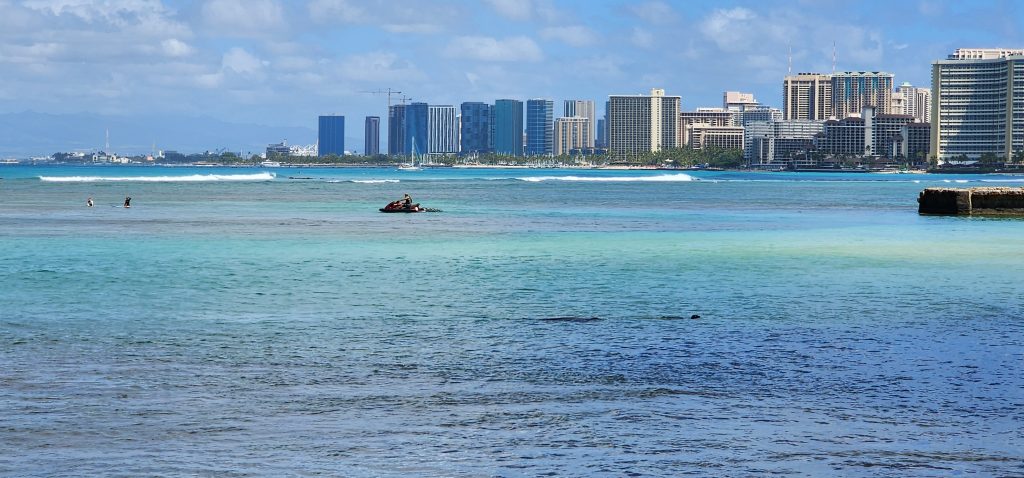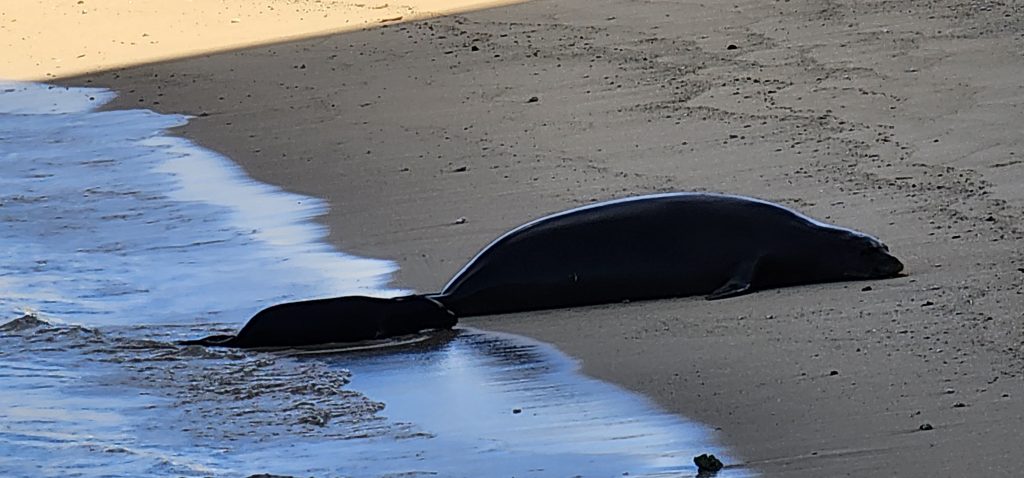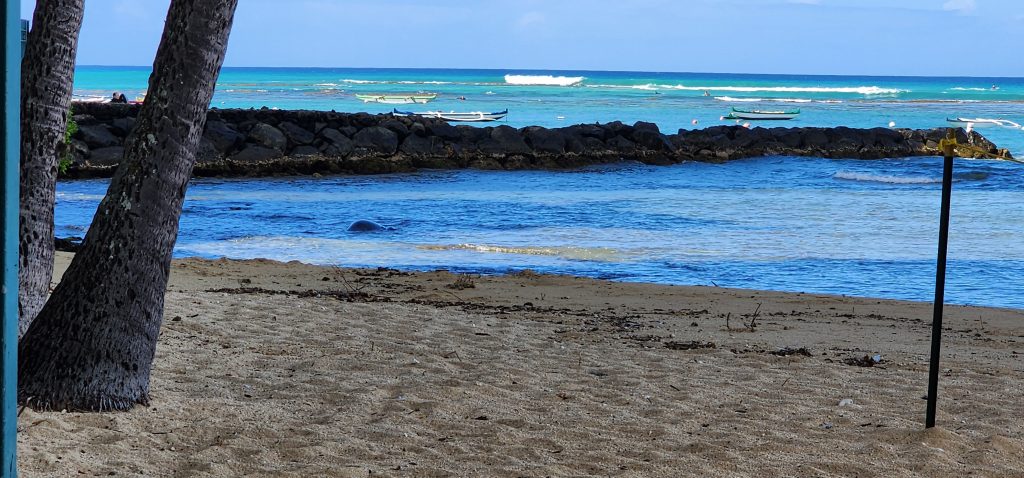Hawaiian monk seal born on Waikīkī beach to be relocated after weaning

The Hawaiian monk seal pup Pualani, who was born in mid-April on Kaimana Beach in Waikīkī, will be relocated after she is weaned from her mama Kaʻiwi.
“We determined the best option for Pualani [PO5] is to relocate her, especially given the risks of habituation in such a crowded area,” said Kilali Ala’ilima Gibson, NOAA Fisheries O‘ahu Marine Wildlife Response Coordinator.
A young seal that receives positive interactions from people — such as attention, play or being fed — will continue to seek out humans for these interactions. Once the seal grows and matures that becomes a human safety risk. The seal may eventually:
- Rely on people for interactions rather than other seals in the wild
- Fail to learn how to avoid marine hazards
- Fail to develop skills necessary to find food, potentially becoming reliant on people for food or aggressive toward people if it doesn’t receive food from them
Young Hawaiian monk seals face threats to their survival regardless of where they grow up on Oʻahu. These threats include entanglement or ingestion of fishing gear, dogs roaming off leash, intentional harm and disease, like toxoplasmosis.
Pualani’s new beach, which will remain undisclosed for her safety, also offers a higher potential for interactions with other seals. This includes juvenile seals she can play with and learn from, which is important for her development.
During the nursing period, a mother monk seal will not leave to forage for food. Instead, she will stay with her pup and fast until she has used up her energy reserves. At this point, the mother will abruptly wean the pup. The pup then becomes an independent seal and must learn how to survive on its own.
Trained and experienced NOAA staff will collect Pualani for relocation. The exact approach will depend on the circumstances that day and Pualani’s whereabouts. For example, boards with handles may be used to safely encourage Pualani to move in the direction of a transport cage or large dog kennel.
A net specifically made for scooping up and carrying juvenile seals (called a “stretcher net”) could also be used. A stretcher net is a piece of netting strung between two poles and looks a lot like a hammock.
Tranquilizers are not routinely used for transport, so it is expected Pualani will wiggle and vocalize during transport. These behaviors are useful indicators of her alertness, health and strength, and a veterinarian will be onsite to monitor her well-being.
The goal is to collect and transport Pualani in a safe manner so she is back in the wild without skipping a beat.
The relocation decision was made in coordination with state, county and non-profit partners, according to NOAA.
“Together, we’ve created a safe nursery for mom and pup, and we look forward to the next phase of monitoring them as they transition out of their nursing phase and into independent seals,” Gibson said.
The agencies involved are making plans for Pualani’s safe removal from the busy beach.
Volunteers and staff from Hawai‘i Marine Animal Response, City and County of Honolulu lifeguards, and officers from the state Division of Conservation and Resources Enforcement have protected the monk seal pair and ocean goers around the clock, and with a roped perimeter. Mother monk seals, like many wild animals, can be fiercely protective of their offspring and inflicted injuries on people who get too close.
Only one person has been cited over the past month, according to the state Department of Land and Natural Resources.
The collaborative, multi-agency effort has expanded and been enhanced over the past six years, during which four monk seal pups have been born and weaned at Kaimana Beach.
To learn more about Pualani, click here.















